中医基础知识
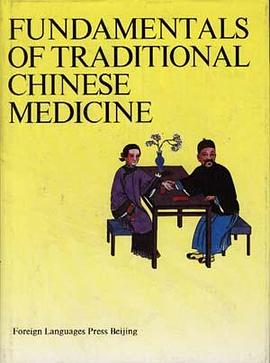
内容简介:
Fundamentals of Traditional Chinese
Medicine
This book systematically describes
the fundamental theories of Tradi-
tional Chinese Medicine (TCM).
It outlines the basic concepts and
theories of TCM, such as yin-yang,
the five elements, qi(vital energy),
blood and body fluids, pathogenesis,
pathology, the four diagnostic tech-
niques, the eight guiding principles,
differentiation of syndromes and ge-
neral rules of prevention and treat-
ment.
Shuai Xuezhong, the author and
translator of the book, is an associate
professor and director of the English-
TCM Teaching and Research Section
at the Hunan College of Traditional
Chinese Medicine.
目录:
CONTENTS 1. GENERAL INTRODUCTION 1-1 Formation and development of the theoretical system of TCM 1-2 The materialistic and dialectical outlook in the theoretical system of TCM 1-2-1 The materialistic outlook 1-2-1-1 The human body is formed by qi between heaven and earth 1-2-1-2 Mutual dependence of xing (body) and shen (spirit) 1-2-1-3 The prevention and treatment of disease 1-2-2 The dialectical outlook 1-3 Chief featnres of TCM 1-3-1 The holistic concept 1-3-1-1 The body is an integral whole 1-3-1-2 The unity of man and nature 1-3-2 Bianzheng and lunzhi (planning treatment according to diagnosis) 2. YIN AND YANG, FIVE ELEMENTS (PHASES) 2-1 The yin-yang theory 2-1-1 Chief contents of the yin-yang theory 2-1-1-1 Opposition and restraint of yin and yang 2-1-1-2 Interdependence of yin and yang 2-1-1-3 Kinetic equilibrium between yin and yang 2-1-1-4 Intertransformation of yin and yang 2-1-2 Application of the yin-yang theory 2-1-2-1 Tissues and structures of the body 2-1-2-2 Physiological functions of the body 2-1-2-3 Pathological processes of the body 2-1-2-4 Diagnosis 2-1-2-5 Treatment 2-2 The five-element theory 2-2-1 Chief contents of the five-element theory 2-2-1-1 Characteristics of the five elements 2-2-1-2 Classification according to the five elements 2-2-1-3 The interrelationship of the five elements 2-2-2 Application of the five-element theory in TCM 2-2-2-1 The physiological functions of the five yin viscera and their relation 2-2-2-2 The influence of pathological changes of the five yin viscera 2-2-2-3 Application of the five-element theory in diagnosis and treatment 3. VISCERAL SYMPTOMS 3-1 The five yin viscera 3-1-1 The heart 3-1-1-1 Main physiological functions of the heart 3-1-1-2 Relation of the heart to the emotions, body fluids, tissues and sense organs Appendix: Pericardium 3-1-2 The lung 3-1-2-1 Main physiological functions of the lung 3-1-2-2 Relation of the lung to the emotions, body fluids, tissues and sense organs 3-1-3 The spleen 3-1-3-1 Chief physiological functions of the spleen 3-1-3-2 Relation of the spleen to the emotions, body fluids, tissues and sense organs 3-1-4 The liver 3-1-4-1 Chief physiological functions of the liver 3-1-4-2 Relation of the liver to the emotions, body fluids, tissues and sense organs 3-1-5 The kidney 3-1-5-1 Chief physiological functions of the kidney 3-1-5-2 Relation of the kidney to the emotions, body fluids, tissues and sense organs Appendix: Mingmen (the vital portal) 3-2 The six yang viscera 3-2-1 The gallbladder 3-2-2 The stomach 3-2-2-1 Digestion 3-2-2-2 The stomach is concerned with communication and descendence and its qi is normal when it descends 3-2-3 The small intestine 3-2-3-1 The small intestine is concerned with reception and digestion of food 3-2-3-2 The function of the small intestine is to differentiate the purified (nutrients) from the turbid (waste) 3-2-4 The large intestine 3-2-5 The bladder 3-2-6 The triple energizer 3-2-6-1 Governing qi 3-2-6-2 The passage through which body fluids pass 3-2-6-3 Location of the upper, middle and lower energizers and their physiological characteristics 3-3 Unusual organs 3-3-1 Thebrain 3-3-2 The uterus 3-4 Relation between yin and yang viscera 3-4-1 Relation among the five yin viscera 3-4-1-1 Relation between the heart and lung 3-4-1-2 Relation between the heart and spleen 3-4-1-3 Relation between the heart and liver 3-4-1-4 Relation between the heart and kidney 3-4-1-5 Relation between the lung and spleen 3-4-1-6 Relation between the lung and liver 3-4-1-7 Relation between the lung and kidney 3-4-1-8 Relation between the liver and spleen 3-4-1-9 Relation between the liver and kidney 3-4-1-10 Relation between the spleen and kidney 3-4-2 Relation of the six yang viscera 3-4-3 Relation between the five yin and six yang viscera 3-4-3-1 Relation between the heart and small intestine 3-4-3-2 Relation between the lung and large intestine 3-4-3-3 Relation between the spleen and stomach 3-4-3-4 Relation between the liver and gallbladder 3-4-3-5 Relation between the kidney and bladder 4. Ql (VITAL ENERGY), XUE (BLOOD) AND JIN-YE (BODY FLUIDS) 4-1 Qi (vital energy) 4-1-1 Basic concept 4-1-2 Formation 4-1-3 Physiological functions 4-1-3-1 The promoting action 4-1-3-2 The warming action 4-1-3-3 The protecting action 4-1-3-4 The controlling action 4-1-3-5 Activities of qi 4-1-4 Movement of qi 4-1-5 Distribution and classification of qi 4-1-5-1 Primordial qi 4-1-5-2 Chest qi 4-1-5-3 Nutritional qi 4-1-5-4 Defensive qi 4-2 Blood 4-2-1 Basic concept 4-2-2 Formation 4-2-3 Function 4-2-4 Circulation 4-3 Bodyfluids 4-3-1 Basic concept 4-3-2 Formation, distribution and excretion 4-3-3 Function 4-4 Interrelation of qi, blood and body fluids 4-4-1 Relation between qi and blood 4-4-1-1 Qi can generate blood 4-4-1-2 Qi can promote blood circulation 4-4-1-3 Blood as the carrier of qi 4-4-2 Relation between qi and body fluids 4-4-2-1 Qi can generate body fluids 4-4-2-2 Qi can transform body fluids 4-4-2-3 Qi controls body fluids and body fluids in turn carry qi 4-4-3 Relation between blood and body fluids 5. MERIDIANS AND THEIR COLLATERALS 5-1 The concept of the meridian and the formation of its system 5-1-1 Concept of the meridian system 5-1-2 Formation of the meridian system 5-2 Twelve regular meridians 5-2-1 Names 5-2-2 Direction, connection, distribution, relation and sequence 5-2-2-1 Direction and connection 5-2-2-2 Distribution 5-2-2-3 Relationship between the meridians 5-2-2-4 Sequence of flow of qi and blood in the meridian 5-2-3 Course 5-2-3-1 Lung Meridian of Hand-taiyin (L) 5-2-3-2 Large Intestine Meridian of Hiand-yangming (LI) 5-2-3-3 Stomach meridian of foot-yangming (S) 5-2-3-4 Spleen Meridian of Foot-taiyin (Sp) 5-2-3-5 Heart Meridian of Hand-shaoyin (H) 5-2-3-6 Small Intestine Meridian of Hand-taiyang (SI) 5-2-3-7 Bladder Meridian of Foot-taiyang (B) 5-2-3-8 Kidney Meridian of Foot-shaoyin (K) 5-2-3-9 Pericardium Meridian of Hsiad-jueyin (P) 5-2-3-10 Triple Energizer Meridian of fland-shaoyang (TE) 5-2-3-11 Gallbladder Meridian of Foot-shaoyang (G) 5-2-3-12 Liver Meridian of Foot-jueyin (Liv) 5-3 Eight extra meridians 5-3-1 Governor Vessel Meridian (GV) 5-3-1-1 The course 5-3-1-2 Main function 5-3-2 Conception Vessel Meridian (CV) 5-3-2-1 The course 5-3-2-2 Main function 5-3-3 Strategical Vessel Meridian 5-3-3-1 The course 5-3-3-2 Main function 5-3-4 Girdle Vessel Meridian 5-3-4-1 The course 5-3-4-2 Main function 5-3-5 Mobility Vessel Meridians of Yin and Yang 5-3-5-1 The course 5-3-5-2 Main function 5-3-6 Regulating Vessel Meridians of Yin and Yang 5-3-6-1 The course 5-3-6-2 Main function 5-4 Branches of the twelve meridians, large collateral msridians, musculofascia (or musculotendinous) meridians and cutaneous areas of meridians 5-4-1 Branches of the twelve meridians 5-4-1-1 Physiological function 5-4-1-2 The course 5-4-2 Large collateral meridians 5-4-2-1 Physiological function 5-4-2-2 Locations 5-4-3 Musculofascia (or musculotendinous) meridians 5-4-3-1 Physiological function 5-4-3-2 Distribution 5-4-4 Cutaneous areas of meridian 5-5 Physiology of meridians and application of the meridian theory 5-5-1 Physiological functions 5-5-1-1 Communicating the exterior of the body with the interior, the upper with the lower and connecting with the viscera and organs 5-5-1-2 Promoting qi and blood circulation and nourishing the viscera and tissues 5-5-1-3 The inducing and conducting actions 5-5-1-4 Regulating the balance 5-5-2 Application of the meridian theory 5-5-2-1 Pathological process 5-5-2-2 Guiding diagnosis and treatment 6.THE CAUSE OF DISEASE 6-1 The cause of disease 6-1-1 The six excesses 6-1-1-1 Wind occurs chiefly in spring but may appear in every season 6-1-1-2 Cold 6-1-1-3 Summer-heat 6-1-1-4 Damp 6-1-1-5 Dryness 6-1-1-6 Fire (intense heat) 6-1-2 Pestilential factors 6-1-3 Internal injuries by the seven emotions 6-1-3-1 Relation between the seven emotions and qi and blood in the viscera 6-1-3-2 Characteristics of the seven emotions and disease mechanism 6-1-4 Improper diet, fatigue and lack of physical exercise 6-1-4-1 Improper diet 6-1-4-2 Fatigue and lack of physical exercise 6-1-5 External injuries 6-1-6 Tan-yin (phlegm and excess exudates) and congealed blood 6-1-6-1 Tan-yin 6-1-6-2 Congealed blood 6-2 Principles of occurrence and change of disease 6-2-1 Anti-pathogenic and pathogenic factors and the onset of disease 6-2-1-1 Deficient anti-pathogenic factor as a cause of disease 6-2-1-2 The pathogenic factor 6-2-1-3 The anti-pathogenic factor 6-2-2 The environment and invasion of disease 6-2-2-1 The external environment and invasion of disease 6-2-2-2 The internal environment and invasion of disease 7. PATHOGENESIS 7-1 Flourishing and decline of anti-pathogenic and pathogenic factors 7-1-1 Flourishing and decline of anti-pathogenic and pathogenic factors and their deficiency and excess 7-1-2 Flourishing and decline of pathogenic and anti-pathogenic factors and transformation of disease 7-1-2-1 Anti-pathogenic factor conquering pathogenic factor 7-1-2-2 Pathogenic factor conquering anti-pathogenic factor 7-2 Dishamony between yin and yang 7-2-1 Relative flourishing of yin or yang 7-2-1-1 The absolute excess of yang 7-2-1-2 The absolute excess of yin 7-2-2 The absolute decline of yin or yang 7-2-2-1 The absolute decline of yang 7-2-2-2 The absolute decline of yin 7-2-3 Interrelationship of yin and yang 7-2-3-1 Deficient yin affecting yang 7-2-3-2 Deficient yang affecting yin 7-2-4 Disharmony of yin and yang 7-2-4-1 Excess yin hindering yang 7-2-4-2 Excess yang hindering yin 7-2-5 Depletion of yin and yang 7-2-5-1 Depletion of yang 7-2-5-2 Depletion of yin 7-3 Abnormality of qi and blood 7-3-1 Abnormal qi 7-3-1-1 Deficient qi 7-3-1-2 Abnormal movement of qi 7-3-2 Abnormal blood 7-3-2-1 Blood deficiency 7-3-2-2 Congealed blood 7-3-2-3 Blood heat 7-3-3 Dysfunction of the relationship between qi and blood 7-3-3-1 Stagnant qi and blood 7-3-3-2 Inability of qi to control blood 7-3-3-3 Exhaustion of qi associated with severe hemorrhage 7-3-3-4 Deficient qi and blood 7-3-3-5 Hypofunction of qi and blood in nourishing meridians 7-4 Abnormal body fluid metabolism 7-4-1 Insufficiency of body fluids 7-4-2 Distribution, excretion and obstruction of body fluids 7-4-3 Disharmony between body fluids, qi and blood 7-4-3-1 Relation of body fluids and obstruction of qi 7-4-3-2 Exhaustion of qi associated with body fluids 7-4-3-3 Exhaustion of body fluids and dryness of blood 7-4-3-4 Consumed body fluids and congealed blood 7-5 "Five endogenous pathogens" 7-5-1 Wind qi moving internally 7-5-1-1 Transformation of liver yang into wind 7-5-1-2 Wind symptom produced by extreme heat 7-5-1-3 Wind symptom produced by deficient yin 7-5-1-4 Wind symptom produced by deficient blood 7-5-2 Internal cold 7-5-3 Internal dampness (also called endogenous damp) 7-5-4 Dryness caused by consumed body fluids 7-5-5 Internal fire 7-6 Pathogenesis of meridians 7-6-1 Relative excess and deficient qi and blood in the meridians 7-6-2 Adverse qi and blood in the meridians 7-6-3 Obstruction of qi and blood circulation in the meridians 7-6-4 Failure of qi and blood in the meridians 7-7 Pathogenesis of zang-fu (viscera) 7-7-1 Disharmony between yin and yang, qi and blood of the five yin viscera 7-7-1-1 Disharmony between yin and yang, qi and blood of the heart 7-7-1-2 Disharmony between yin and yang, qi and blood of the lung 7-7-1-3 Disharmony between yin and yang, qi and blood of the spleen 7-7-1-4 Disharmony between yin and yang, qi and blood of the liver 7-7-1-5 Disharmony between yin and yang, qi and blood of the kidney 7-7-2 Disorder of the six yang viscera 7-7-2-1 Disorder of the gallbladder 7-7-2-2 Disorder of the stomach 7-7-2-3 Disorder of the small intestine 7-7-2-4 Disorder of the large intestine 7-7-2-5 Disorder of the urinary bladder 7-7-2-6 Hypofunction of the triple energizer qi 7-7-3 Dysfunction of the unusual organs 7-7-3-1 Dysfunction of the brain 7-7-3-2 Dysfunction of marrow and bone 7-7-3-3 Dysfunction of blood vessels 7-7-3-4 Dysfunction of the uterus 8. FOUR TECHNIQUES OF DIAGNOSIS 8-1 Inspection 8-1-1 Examination of the body 8-1-1-1 Inspection of shen (Spirit) 8-1-1-2 Inspection of complexion 8-1-1-3 Examination of the body stature 8-1-1-4 Inspection of body stature and movement 8-1-2 Inspection of the local body 8-1-2-1 Evaluation of the head and hair 8-1-2-2 Inspection of the eye 8-1-2-3 Inspection of the ear 8-1-2-4 Inspection of the nose 8-1-2-5 Inspection of the lips, teeth and throat 8-1-2-6 Inspection of the skin 8-1-3 Inspection of the tongue 8-1-3-1 Relation between the tongue and viscera 8-1-3-2 Tongue diagnosis 8-1-3-3 Relation between the tongue proper and its coating 8-1-3-4 Clinical significance of tongue diagnosis 8-1-3-5 Notes on tongue diagnosis 8-1-4 Observation of excreta 8-1-4-1 Sputum and saliva 8-1-4-2 Vomit 8-1-4-3 Stools 8-1-4-4 Urine 8-1-5 Observation of the veinules of the infant's index finger 8-1-5-1 Techniques for observing the finger's veinules 8-1-5-2 Observing the small superficial veinules of the finger 8-2 Auscultation-olfaction 8-2-1 Auscultation 8-2-1-1 Speech 8-2-1-2 Respiration 8-2-1-3 Cough 8-2-1-4 Hiccup and eructation 8-2-2 Olfaction 8-3 Inqniry 8-3-1 Inquiry into the patient's general condition 8-3-2 Inquiry into the patient's past history and lifestyle 8-3-3 Inquiry into the patient's family and medical history 8-3-4 Inquiry into the disease process 8-3-5 Inquiry into present symptoms 8-3-5-1 Chills and fever 8-3-5-2 Sweating 8-3-5-3 Inquiry into pain 8-3-5-4 Sleep 8-3-5-5 Diet and appetite 8-3-5-6 Stools and urine 8-3-5-7 Menstrual flow and vaginal discharge 8-3-5-8 Children 8-4 Palpation 8-4-1 Taking the patient's pulse 8-4-1-1 The principle of the formation of pulse indications and clinical significance of taking pulse 8-4-1-2 Location of palpation and pulse 8-4-1-3 Ways of taking pulse 8-4-1-4 Normal pulse indications 8-4-1-5 Abnormal pulse and its indications 8-4-1-6 Compound pulse and its indications 8-4-1-7 Diagnosis in accordance with pulse and symptoms 8-4-2 Palpation of certain areas of the body 8-4-2-1 Method and significance 8-4-2-2 Contents 11-2-2 Reinforcing the anti-pathogenic factor and eliminating the pathogenic factor 11-2-2-1 Reinforcing the anti-pathogenic factor and eliminating the pathogenic factor 11-2-2-2 The pninciple of reinforcing the anti-pathogenic factor and eliminating the pathogenic factor 11-2-3 Regulating yin and yang 11-2-3-1 Reducing a relative excess 11-2-3-2 Reinforcing a relative decline 11-2-4 Regulating the function of the viscera 11-2-5 Regulating the relation between qi and blood 11-2-6 Treatment of a disease according to season, environment and individual constitution 11-2-6-1 Treatment of a disease according to the season 11-2-6-2 Treatment of a disease according to the geographical environment 11-2-6-3 Treatment of a disease according to the individual 11-2-7 Application of the general rules of treatment 11-2-7-1 Application of the eight principal therapies 11-2-7-2 Application of the eight principal therapies in coordination
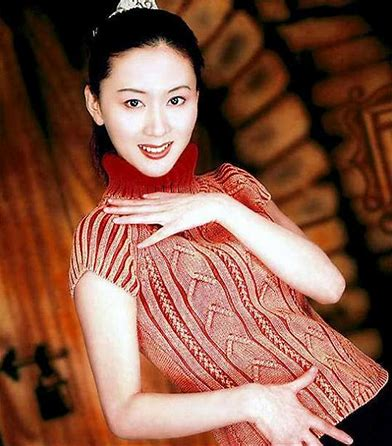
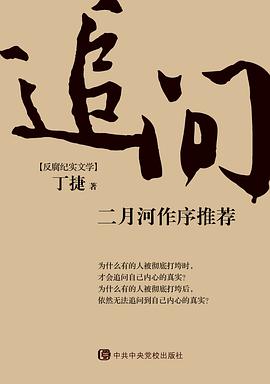
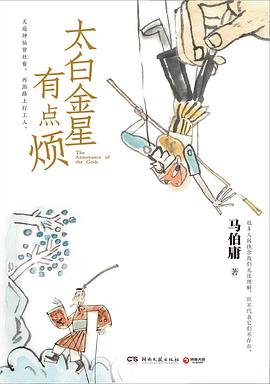
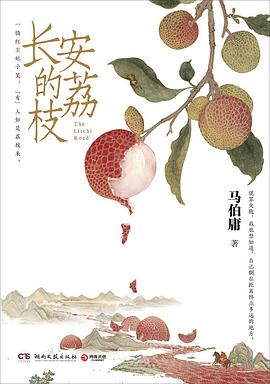
评论